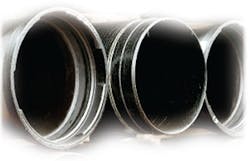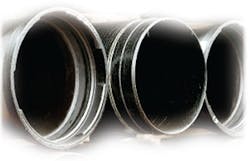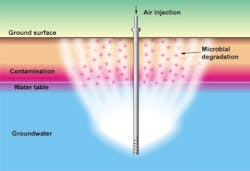Hot microbes cause groundwater cleanup rethink
• CSIRO researchers have discovered that microorganisms that help break down contaminants under the soil can actually get too hot for their own good
This can slow down the clean up of the groundwater and even continue the spread of contamination.
The new findings mean that researchers now have to rethink the way groundwater remediation systems are designed.
CSIRO Water for a Healthy Country Flagship scientist Mr Colin Johnston, who is based in Perth, Western Australia, said the researchers were investigating how temperatures below the soil's surface could be used as an indicator of the microbial degradation process associated with biosparging.
The contaminants are 'food' to the microbes and the oxygen in the air helps the microbes unlock the energy in the food so that they metabolize and grow, consuming more contaminants and stopping the spread of the contamination.
"Observations of diesel fuel contamination showed that, at 3.5 meters below the ground surface, temperatures reached as high as 47 °C," Mr Johnston said.
"This is close to the 52 °C maximum temperature tolerated by the community of microorganisms that naturally live in the soil at this depth and within the range where the growth of the community was suppressed."
The growth of the soil's microorganism community can also be helped by adding nutrients.
However computer modeling confirmed that any attempts to further increase degradation of the contamination through the addition of nutrients had the potential to raise temperatures above the maximum for growth.
"Although increasing the flow of air would reduce temperatures and overcome these limitations a fine balance needs to be struck as the injected air can generate hazardous vapors that overwhelm the microorganisms leading to unwanted atmospheric emissions at the ground surface," Mr Johnston said.
"This would be particularly so for highly volatile compounds such as gasoline.
"It appears that prudent manipulation of operating conditions and appropriate timing of nutrient addition may help limit temperature increases."
Mr Johnston said further research was required to better understand the thermal properties in the subsurface as well as the seasonal effects of rainfall infiltration and surface soil heating.
###


